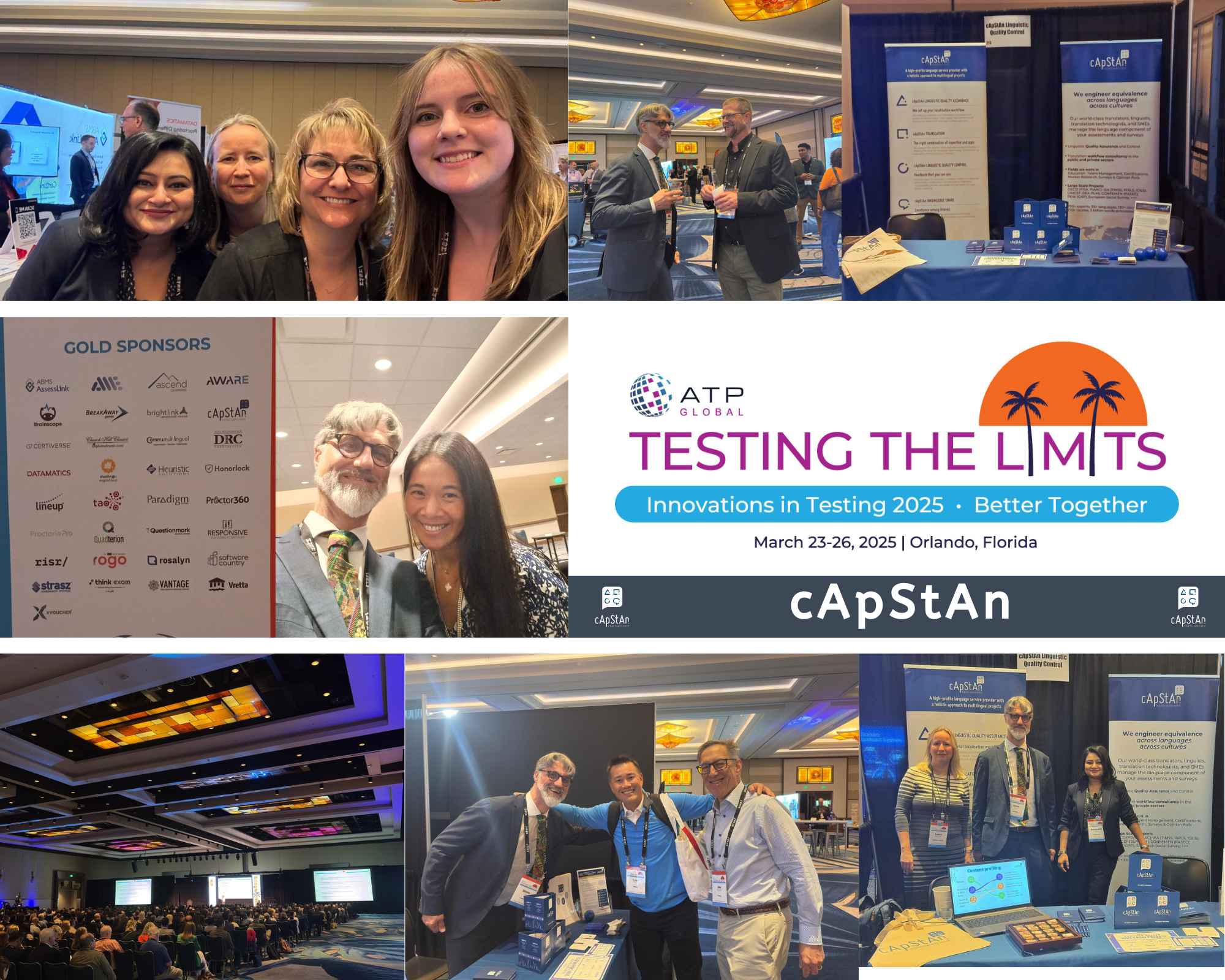
Post-Conference Review | ATP Innovations in Testing Conference | cApStAn | Florida, USA
Three weeks ago, we flew to Florida.
“We” could refer to well over a thousand professionals from the testing industry, who converged in Orlando, Florida from March 23 to March 26. The first-person plural conveys a sense of community and of belonging. At a smaller scale, “we” refers to my fabulous colleagues, Devasmita Ghosh and Laura Wäyrynen, who, together with yours truly, attended the 26th edition of the Association of Test Publishers’ iconic conference. As a Gold Sponsor, we could set up our recognisable blue cApStAn booth in the exhibition hall, where we could spark multiple conversations about test localization.
We also came for the content, which allows us to keep our finger on the pulse of the industry we have served for 25 years. The opening keynote by Michael J. Jabbour, AI Innovation Officer at Microsoft, had the same prophetic vibe that generative AI enthusiasts have been spreading for some years now: everything will change, has changed, there are very few things AI can’t do, start integrating it in your processes. There have been so many game-changers and revolutions in the past years and months that it has become difficult to obtain a wow! effect, even with a presentation packed with interesting use cases. Most of us are using generative AI on a daily basis in the meantime, and FOMO has been replaced with AI fatigue to some extent.
After that, when there are up to 11 simultaneous breakout sessions, one needs to define criteria to prioritise which ones to attend. These may range from direct relevance to our work to attractiveness of the topic, from panel composition to sympathy for a cause. I enjoyed the Peas in a Pod sessions, where participants were not shy in sharing contrasting perspectives about the use of AI in test development and about ethical use of AI. There were people who were vocal about the risk involved in outsourcing thinking processes. There were others who are convinced that personalised formative assessments will allow everyone to learn better and more, and this made for interesting debates.
The panel format allowed presenters to explore the use of avatars with flair and humour, or to discuss the value of disruptive change in terms of new policies and practices. I enjoyed it when the informed audience raised astute questions, sometimes putting presenters on the spot. The fact that the abstracts for these sessions were submitted in the summer last year may partly explain that there were relatively few questions raised about the future of education and testing in the current political climate. While I fully agree that professionalism should be dissociated from any form of partisanship, I am not alone in believing that, in an industry association such as the ATP, it is legitimate to openly discuss recent developments that deeply affect the way we work. Keeping science centre-stage or promoting diversity, equity, inclusion and belonging should not be equated with a political statement.
Finally, yet importantly, reconnecting with the partner organisations we love to work with and making contact with those we would like to work with is an invaluable component of Innovations in Testing. There was much interest in our new machine translation (MT) and automated translation quality estimation (AIQE) workflows and their possible applications.
~In the words of our Co-Founder Steve Dept